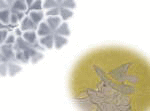The Contributions of The Tea-masters to Art
『 Manifold indeed have been the contributions of the tea-masters to art.
They completely revolutionised the classical architecture and interior decorations, and established the new style which we have described in the chapter of the tea-room, a style to whose influence even the palaces and monasteries built after the sixteenth century have all been subject.
The many-sided Kobori-Enshiu has left notable examples of his genius in the Imperial villa of Katsura, the castles of Nagoya and Nijo, and the monastery of Kohoan.
All the celebrated gardens of Japan were laid out by the tea-masters.
Our pottery would probably never have attained its high quority of excellence if the tea-masters had not lent to it their inspiration, the manufacture of the utensils used in the tea-ceremony calling forth the utmost expenditure of ingenuity on the part of our ceramists.
The Seven Kilns of Enshiu are well known to all students of Japanese pottery.
Many of our textile fabrics bear the names of tea-masters who conceived their colour or design.
It is impossible, indeed, to find any department of art in which the tea-masters have not left marks of their genius.
In painting and lacquer it seems almost superfluous to mention the immense sevice they have rendered.
One of the greatest schools of painting owes its origin to the tea-master Honnami-Koyetsu, famed also as a lacqer arist and potter.
Beside his works, the splendid creation of his grandson, Koho, and of his grand-nephews, Korin and Kenzan, almost fall into the shade.
The whole Korin school, as it is generally designated, is an expression of Teaism.
In the broad lines of this school we seem to find the vitality of nature herself. 』
(From the Book of Tea-Tea-Masters、p.110-112, Charles E. Tuttle Co., Rutland, Vermont, Tokyo, Japan)
The way of Tea is the culture of daily life.
It's mean how we enjoy our daily life includings philosophy and arts.
To enjoy the human life, we need house, foods and related goods and like to enjoy all kinds of arts .
We also ask to enjoy the nature collaborating to resonace with human being.
Click Please!! 





 『The birth of the Art of Flower Arrangement seems to be simultaneous with that of Teaism in the fifteenth century.
『The birth of the Art of Flower Arrangement seems to be simultaneous with that of Teaism in the fifteenth century. 『When a tea-master has arranged a flower to his satisfaction he will place it on the tokonoma,the place of honour in a Japanese room.
『When a tea-master has arranged a flower to his satisfaction he will place it on the tokonoma,the place of honour in a Japanese room. 『Why not destroy flowers if therby we can envolve new forms ennobling the world ideas?
『Why not destroy flowers if therby we can envolve new forms ennobling the world ideas?
 『Yet even in the case of pot flowers we are inclined to suspect the selfishness of man.
『Yet even in the case of pot flowers we are inclined to suspect the selfishness of man.

 『The wanton waste of flowers among Western communities is more appalling than the way they are treated by Eastern Flower-Masters.
『The wanton waste of flowers among Western communities is more appalling than the way they are treated by Eastern Flower-Masters.